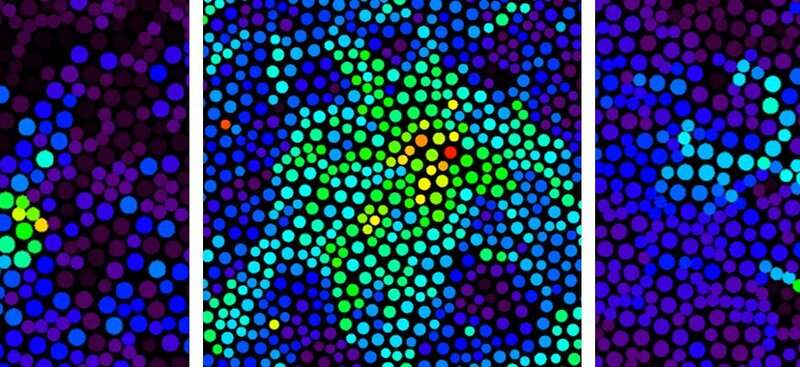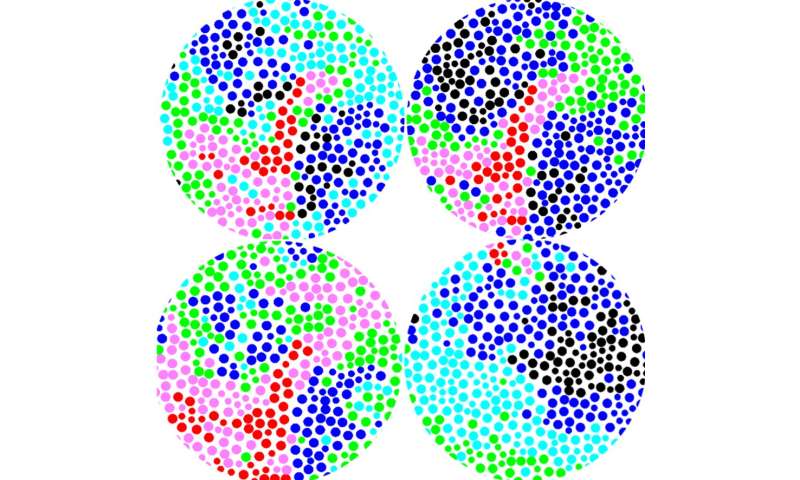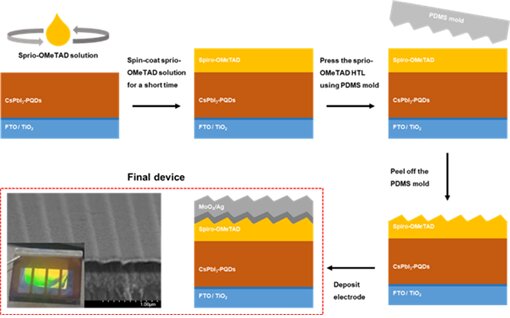#Dissecting colloidal glasses using laser as a lancet

“#Dissecting colloidal glasses using laser as a lancet”

Bo Li and Kai Kou, Research Fellows of IBS Center for Soft and Living Matter, together with Walter Kob, Professor of University of Montpellier and Institute Universitaire de France, and Steve Granick, Director of the IBS Center for Soft and Living Matter, report together in Nature that the onset of glass transition is a highly non-trivial process involving complex non-linear responses.
As a substance giving remarkable impetus to both the convenience of our daily life and the advance of modern science and technology, glasses puzzle us, however, on the basic science level. “Glasses see much incremental study but rarely a breakthrough, regardless of the endeavors from generations of scientists,” commented Granick.
The reported non-monotonic dynamical length scale peaking at the onset temperature subverts the prevalent understanding that cage formation is a simple crossover between liquid and glass. “One central question in glass science is the cage formation process that gives the glassy materials their unique optical and mechanical properties,” said Kob.
“And we directly hit the problem by locally exciting a colloidal glass using laser beams,” said Li.
The emergence of the non-monotonic length scale results from the buildup of domains with cooperative dynamics that become increasingly rigid and start to dominate the particle dynamics. “Just like the painting of Seurat, the mosaic of the dynamical grains and the cage formation is directly related to the merging of them,” says Kob.
“The beauty of science here is that we are able to see how glasses germinate from the liquids microscopically,” Li said.

The simple physical picture of the enhanced cooperative dynamics for the non-monotonic response suggests the finding should be general. Kob said, “It’s amazing that the physical rule behind such rich dynamics is so concise.”
Li adds, “Our findings in a well-defined model system will help better understanding other glassy or disordered systems like polymer, granular and atomic glasses, etc.”
In addition to the non-monotonic behavior, a scaling relation between the morphology and size of the excitation pattern is extracted based on a huge amount of experimental data. “The deviation of this relation reflects the degree of a material’s heterogeneity at certain condition,” said Li. Granick remarked, “This scaling law, besides its theoretical importance for physicists, will interest chemists and material scientists as well by offering them a ‘ruler’ that guides the design and synthesis of glass materials.”
Beyond enlightening the first step of glass transition, this proof-of-concept experiment paves the way for the fundamental understanding of glasses eventually. “Using laser as a lancet, a glass sample can be precisely anatomized,” said Granick.
“More and more exotic yet puzzling behaviors in glasses will be assessed in this way,” predicted Kob.
This work is motivated by the long-standing challenges in glass science. The sluggish and highly coupled dynamics always bury the key effect. “If only I could shrink myself, jump into the system and stir the surroundings,” Li said. The femtosecond holographic laser system originally developed by Kou perfectly satisfy the needs of the local excitation. Valuable theoretical support is obtained from Kob for refining the complex experimental observations into concise physical principles. “The highly interdisciplinary environment in our center and successful international collaboration makes a once improbable brainstorm real,” commented Granick.
Granick and Kob concluded, “The field of glass science, being classic but constantly challenging, is promoted by these experiments that elucidate the onset of glass transition. The conceptual importance of cage-formation for the properties of glassy materials is revealed. And the micro-rheological approach taken here opens the door to thorough understanding of the glasses one day.”
Explaining the physical origin of the memory effect in glasses
Anatomy of cage formation in a 2D glass-forming liquid, Nature (2020). DOI: 10.1038/s41586-020-2869-5 , www.nature.com/articles/s41586-020-2869-5
Citation:
Dissecting colloidal glasses using laser as a lancet (2020, November 11)
retrieved 11 November 2020
from https://phys.org/news/2020-11-colloidal-glasses-laser-lancet.html
This document is subject to copyright. Apart from any fair dealing for the purpose of private study or research, no
part may be reproduced without the written permission. The content is provided for information purposes only.
For forums sites go to Forum.BuradaBiliyorum.Com
If you want to read more Like this articles, you can visit our Science category.



